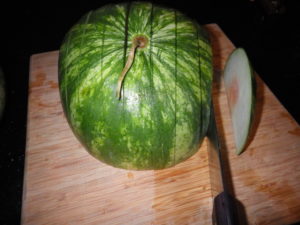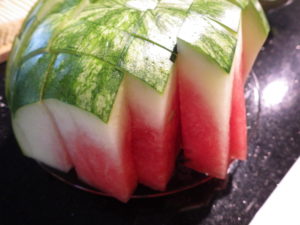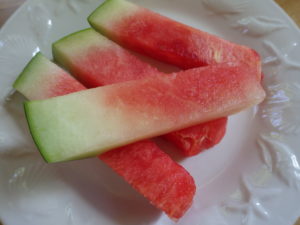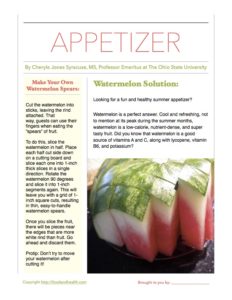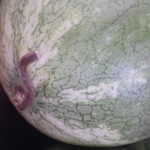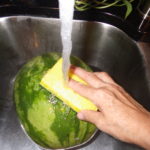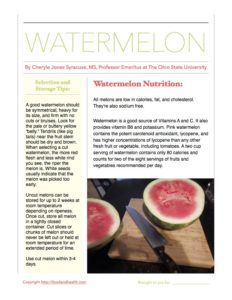We have a wonderful group of neighbors in a dining group, and each month we gather for drinks before going to a local restaurant for dinner. Each couple takes their turn hosting the get-together, and some folks go all out and serve a buffet of appetizers and other nibbles. In fact, quite often the guests complain that they’ve eaten too much before dinner. I often wonder why people (even those that are usually very mindful of what they personally eat) always seem to pull out the most unhealthful, high calorie, and high fat foods they can find when they have people over.
This month it was our turn to host. Everyone knows that I personally try to eat and serve healthful foods when possible. The neighbors also know that I frequently write and teach about healthful eating. So I really felt that I needed to “walk the talk” at this gathering.
The pressure was on. What to offer?
I wanted something in addition to the ubiquitous carrots and celery sticks that often make up the “healthful option” at gatherings. To me, fruit was the obvious answer and watermelon was plentiful. I’d seen some Pinterest photos of “the right way to cut a melon,” so I thought I’d give it a try.
The concept was to cut the watermelon into sticks, leaving the rind attached so that guests could use their fingers when eating the “spears” of fruit. My version didn’t look as good as those I saw in the photos online, but it was well-received by our guests!
Here are a few things I noticed about this particular way to prepare watermelon, in case you’d like to try it too…
- There were pieces near the edges that were more white rind than fruit—so I pitched them.
- Don’t try to move your watermelon after cutting it!
One of the key messages from the new Dietary Guidelines for Americans is “everyone has a role in supporting healthy eating patterns.” This doesn’t only have to be in governmental, organizational, or educational settings. We can always encourage healthful eating patterns whenever possible, even closer to home with family and friends.
It’s always a challenge to “walk the talk” For those who try… keep up the good work!
By Cheryle Jones Syracuse, MS, Professor Emeritus at The Ohio State University
Here are some other resources that can help you walk the talk at work and at home…
And here’s a free printable handout with instructions on how to make this simple summer appetizer…



